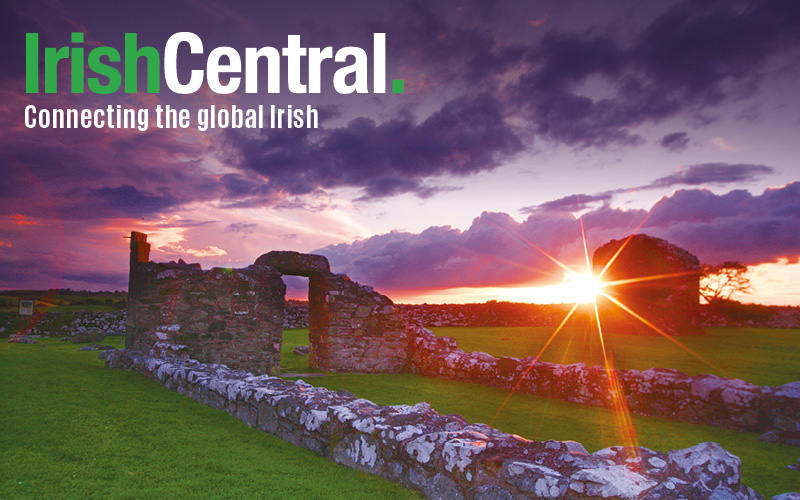| Illustration by Caty Bartholomew |
A lazy wind, by the way, is an old Roscommon phrase to describe the dreaded east wind. "It's a lazy wind,” they say up there. "It would rather go through you than around you!"
I shiver at the truth of that, but I don't move away from the roadside because of the width and depth of the history revealing itself before my eyes.
We had the coldest March in recent history, you see, with chilly frosts and snows and harsh weather generally. But it has been dry too, so dry there was water rationing in Dublin city last week.
The positive side of the conditions has been the power of the sunshine in the west. Rarely have I seen such brilliance during most of the daytime hours most days, and it is that factor which is creating the magic in the valley below.
Sweeping rays of sunshine like these, you see, quite literally X-ray the long lean flanks of the mountains and lowlands, and it is breathtaking to see that happening atop such striking natural scenery as is common in Connemara.
I am looking at the clearly defined potato gardens which fed the past and gone generations from this place near Inverin. The marks of the "lazy beds" that grew the potatoes which dreadfully failed during the Famine and filled the coffin ships with your ancestors look as though the sods were tilled and turned the day before yesterday instead of centuries ago. Breathtaking indeed and awful and poignant too.
And beside each garden the equally clearly X-rayed foundations of the small cottages, long gone, from which the families fled. Decades ago, from local historians, I wrote some of the stories of the hardy people of this place, those that died and those that lived and thrived in the New World.
Standing there I recall the powerful yarn of one of the families -- I think they were named Hernon -- who had been prospering from their bit of land and the fishing industry before the Famine struck and blasted and bleached the local economy.
I was told this was a family with all the skills. They could build seagoing boats, they could hammer out their own steel nails and pegs, craft the sails and rigging. They were skilled fishermen and thrifty and industrious farmers. They were well fitted to survive harsh times in hardy country.
And do you know how they responded to the Famine? I was told they built a sturdy big boat from the keel up, provisioned it as best they could with whatever food they could salvage, including salted fish, and then the entire extended family boarded that ship of hope and set sail for America.
The man who told me the yarn said that the boat was not painted, just tarred and caulked, and it looked like a ghost ship when sailing away from Ireland and was in the folklore as An Baid Ban ...the White Boat.
The story came back later that they lost no lives on the long voyage across to America and eventually settled prosperously in the Boston area.
When my eyes drifted from the dead cottages and gardens revealed by the powerful sun they came down closer to the sea and to two of the three graveyards where the dead of the valley were laid to rest down the generations. The relatively few stubby gravestones still stand strongly there like lighthouses to guild souls the right way.
There is also the ruins of one old chapel, its stone backside to the normally prevailing west wind.
I was told back then in the seventies that very few of those who had to flee the valley because of the Famine ever came home on visits afterwards, even when they had prospered.
One would not expect that any of the first wave of original emigrants would return but, apparently, there was some pishogue (superstition) locally which succeeding generations, though well briefed about their history, adhered to until recent times.
Many of them, it was said, would visit Co. Galway and Galway City, but they would not ever
willfully return to the home ground and parish that let them down in the end.
An elderly priest apparently did break with the tradition a decade before I was told about it, and he came out to say an open air Mass at a spot close to where I was standing the other afternoon.
Brighter times ahead at any rate. Despite the lazy wind the clocks of Connemara have been put back for summer time and another tourist season.
More tellingly still, later in the evening, I could see the first of the bonfires which always spring up mysteriously in Connemara at this time of year. To light such fires is illegal, of course, on environmental grounds, but somehow they always signal the start of the summer.
It has always been traditional for farmers to burn away the old furze and heather and blanched grasses of winter to allow the new green grasses of another season to provide richer pasture for the hardy mountain sheep.
Life goes on. Before I leave I visualize the image of the White Boat sailing away on the winds of hope and courage.




Comments